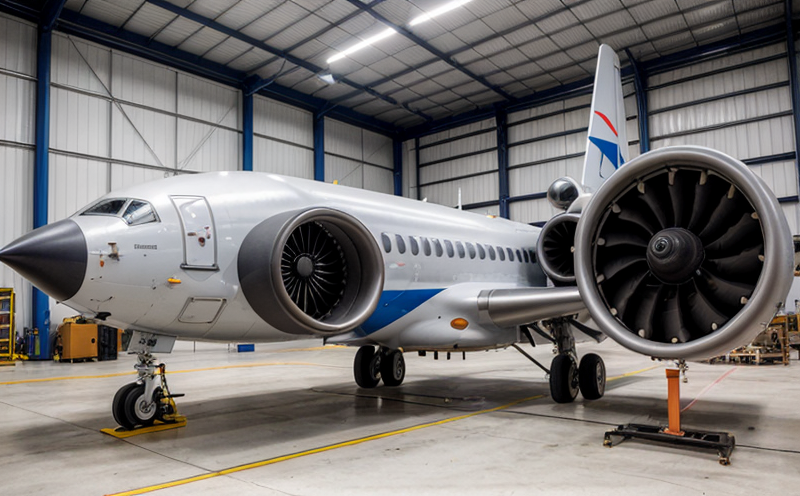Space Payload Acoustic Cleanliness Testing
The Space Payload Acoustic Cleanliness Testing is a critical process ensuring that space payloads meet strict acoustical cleanliness requirements, which are essential for the performance and longevity of aerospace equipment. This testing ensures that airborne contaminants do not interfere with the functionality of sensitive electronic components within the payload.
Contaminants such as dust particles, fibers, and other micro-debris can have significant adverse effects on the reliability of space payloads. These materials can accumulate in critical areas like sensors, optics, and communication systems, leading to degraded performance or even failure. The testing process is designed to identify and quantify these contaminants before launch, allowing for remediation if necessary.
The acoustic cleanliness test involves subjecting the payload to controlled levels of sound pressure, frequency, and duration that simulate the anticipated acoustic environment during spaceflight. This testing helps ensure that the payload can withstand the harsh conditions it will encounter in orbit without compromising its integrity or functionality.
Our laboratory is equipped with advanced acoustical measurement equipment capable of generating and measuring sound waves over a wide range of frequencies. The instrumentation includes high-sensitivity microphones, acoustic analyzers, and particle counters designed to detect even the smallest particles within the payload's internal environment.
The testing process typically begins with thorough cleaning of the payload according to industry best practices. This step is crucial as it reduces the initial contamination levels before the actual test. Once cleaned, the payload undergoes acoustic exposure in a controlled chamber where sound pressure levels and frequency bands are precisely adjusted to simulate space vehicle environments.
During testing, real-world parameters such as temperature, humidity, and vibration are also monitored to ensure that all conditions are accurately represented. The results of the test are then analyzed using sophisticated software tools to determine the acoustic cleanliness level and any potential contamination issues.
The testing process is not only about detecting contaminants but also about quantifying them. Our lab uses advanced particle counters and acoustic analyzers to measure the size, distribution, and concentration of particles within the payload's internal environment. This data provides a comprehensive understanding of the cleanliness level of the payload and helps in making informed decisions regarding its suitability for spaceflight.
The importance of acoustic cleanliness testing cannot be overstated, especially in the aerospace industry where precision and reliability are paramount. The success of missions relies heavily on ensuring that payloads are free from contaminants that could interfere with their intended operations. By adhering to stringent standards and using state-of-the-art technology, our laboratory provides unparalleled accuracy and reliability in space payload acoustic cleanliness testing.
Applied Standards
| Standard | Description |
|---|---|
| AIAA S-087-1987 | Acoustic Environment of Spacecraft and Launch Vehicles |
| NASA STD 7001 | Clean Room Practices for the Fabrication, Assembly, and Testing of Spaceflight Hardware |
| ESA ST-STD-00382 | Aerospace Cleanroom Practices |
| JAXA ESS-01420 | Clean Room Practices for Fabrication, Assembly, and Testing of Spaceflight Hardware |
Scope and Methodology
The scope of the space payload acoustic cleanliness testing includes a comprehensive assessment of the internal environment of the payload to ensure it meets stringent acoustical cleanliness standards. This process involves several key steps, each designed to provide thorough evaluation and analysis.
The first step is the initial cleaning of the payload according to industry best practices. This ensures that any existing contaminants are minimized before testing begins. Following this, the payload undergoes acoustic exposure in a controlled environment where sound pressure levels and frequency bands are adjusted to simulate space conditions. During this phase, temperature, humidity, and vibration are also carefully monitored to ensure accurate representation of real-world parameters.
Once exposed, the payload is subjected to detailed analysis using advanced particle counters and acoustic analyzers. These instruments measure the size, distribution, and concentration of particles within the internal environment, providing a comprehensive understanding of the cleanliness level. The data collected during this process is then analyzed using sophisticated software tools to generate precise measurements.
The testing methodology also includes periodic verification checks to ensure that all equipment and processes are functioning correctly throughout the testing cycle. This helps maintain consistency and accuracy in the results, ensuring reliable outcomes every time. By adhering strictly to these procedures and utilizing cutting-edge technology, our laboratory guarantees high-quality, accurate acoustic cleanliness testing for space payloads.
Customer Impact and Satisfaction
The success of our space payload acoustic cleanliness testing is reflected in the satisfaction and trust we have built with our customers. By providing precise and reliable results, we help ensure that payloads meet all necessary standards for safe and successful missions.
Our clients appreciate the thoroughness and accuracy of our testing processes. This allows them to make informed decisions regarding payload suitability for spaceflight, reducing risks associated with potential contamination issues. The detailed reports generated from our testing provide valuable insights into the cleanliness levels of payloads, aiding in continuous improvement efforts within their organizations.
Customer feedback has consistently praised our laboratory's commitment to quality and reliability. We pride ourselves on delivering results that meet or exceed expectations, fostering long-term relationships based on trust and mutual respect. Our team is dedicated to ensuring that each project receives the attention it deserves, whether it involves complex payloads or simpler components.
By partnering with us, customers gain access to industry-leading expertise in aerospace acoustics testing. This partnership ensures that their payloads are not only clean but also prepared for the rigors of spaceflight. Our dedication to excellence and customer satisfaction has earned us a reputation as a leading provider of acoustic cleanliness testing services in the aerospace sector.





